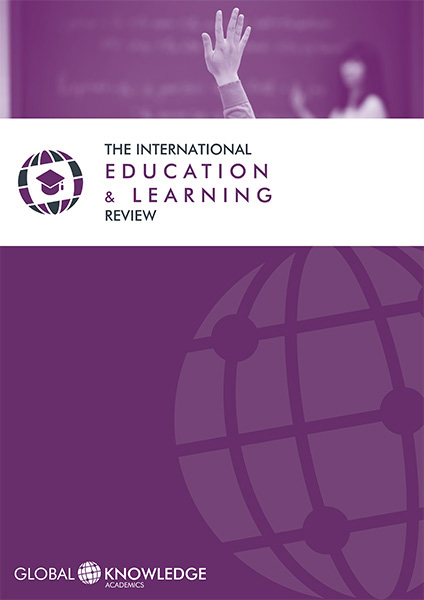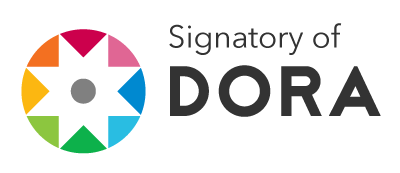Implementing Text-to-Speech Technology as a Means of Enhancing L2 Reading Fluency
DOI:
https://doi.org/10.37467/gka-edurev.v1.2401Keywords:
Oral reading fluency, Text to speech technology, Autonomy, PronunciationAbstract
This article reports on the results of a participatory action research project carried out with a group of ten elementary level students from extension courses in a private university in Bogotá, Colombia (Universidad Minuto de Dios, main branch). The main objective of this study was to determine the effect of text-to-speech (TTS) technology usage on reading fluency in speakers of English as a foreign language. The results show that learners develop oral reading fluency in areas such as linking sounds, pronouncing accurately, and reading timing. Furthermore, learners raised their awareness of the benefits of using Information and Communication Technologies (ICTs) in the process of learning a foreign language, as well as the importance of being autonomous learners. Pedagogical implications and prospects for future research are included.
Downloads
Global Statistics ℹ️
|
519
Views
|
1560
Downloads
|
|
2079
Total
|
|
References
Brown, D. (2001). Teaching by Principles: An Interactive Approach to Language Pedagogy. White Plains, NY: Pearson Education.
Benson, P. (2003). Learner autonomy in the classroom. In Nunan, D. (Ed.) Practical English Language Teaching. New York: McGraw Hill.
Crace, A, et al. (2011). New Total English Pre – Intermediate. Harlow, UK: Pearson Education.
Chapelle, C., & Jamieson, J. (2008). Tips for teaching with CALL: Practical approaches to computer-assisted language learning. White Plains, NY: Pearson Education.
daCruz Payne, C. (2005). Shared Reading for Today’s Classroom. New York: Scholastic.
DeKeyser, R. M. (2001). Automaticity and automatization. In P. Robinson (Ed.), Cognition and second language instruction (pp. 125–151). Cambridge: Cambridge University Press.
Fountas, I.C., & Pinnell, G.S. (2011). Fountas and Pinnell benchmark assessment systems 1 and 2 (2nd ed.). Portsmouth, NH: Heinemann.
Huang, Y., & Liao, L. (2015). A study of Text – To – Speech (TTS) in children’s English learning (pp. 14-30). Central Taiwan University of Science and Technology No.666, Buzih Road, Beitun District, Taichung City 40601, Taiwan (R.O.C.)
Krashen, S. D. (2004, April). The power of reading: Insights from the research (2nd ed.). Portsmouth, NH: Heinemann.
Longman Photo Dictionary ESOL Skills for Life Entry 1. (2010). London, UK: Pearson Education.
Mills, S. C. (2006). Using the Internet for Active Teaching and Learning New Jersey: Pearson Education, Inc. Moon, D. Web-Based Text-to-Speech Technologies in Foreign Language Learning: Opportunities and Challenges in Computer Applications for Database, Education, and Ubiquitous Computing, Springer, Vol. 352, 2012, pp. 120-125, DOI: 10.1007/978-3-642-35603-2_19
Nes-Ferarra, S. L. (2005). Reading, fluency and self-efficacy: A case study. International Journal of Disability, Development and Education, 52(3), p. 215.
Peñaflorida, A.H. (2002). “Non-traditional forms of assessment and response to student writing: A step toward learner autonomy”, in J.C. Richards and W.A. Renandya (eds.), Methodology in Language Teaching: An Anthology of Current Practice. Cambridge: Cambridge University Press, 344-53.
P. Sharma, & B. Barrett. (2007). Review of blended learning: using technology in and beyond the language classroom. Oxford: Macmillan Publishers Limited
Rasinski, T. V., & Samuels, S. J. (2011). In S. J. Samuels & A. E. Farstrup (Eds.). What research has to say about reading instruction (pp. 94 –114). Newark, DE: IRA.
Richards, J. & Lockhart, C. (1994). Reflective Teaching in Second Language Classrooms. Cambridge: Cambridge University Press.
Scharle Agota & Schabo, A. (2000). Learner Autonomy. Cambridge: Cambridge University Press.
Schmenk, B. (2005). Globalizing Learner Autonomy. TESOL Quarterly. 39(1), 107-118.
Segalowitz, N. (2003). Automaticity and second language learning. In C. Doughty & M. Long (Eds.), The handbook of second language acquisition (pp. 382–408). Oxford, UK: Blackwell.
Segalowitz, N. S., & Segalowitz, S. J. (1993). Skilled performance, practice, and the differentiation of speed-up from automatization effects: Evidence from second language word recognition. Applied Psycholinguistics, 14, 369–385.
Swain, M. (1995). Three functions of output in second language learning. In G. Cook, & B. Seidlhofer (Eds.), Principle and practice in applied linguistics: Studies in honour of H. G. Widdowson (pp. 125-144). Oxford: Oxford University Press
Wright, W. (2010). Foundations for Teaching English Language Learners. Philadelphia, USA: Caslon Publishing.
Downloads
Published
How to Cite
Issue
Section
License
Those authors who publish in this journal accept the following terms:
-
Authors retain copyright.
-
Authors transfer to the journal the right of first publication. The journal also owns the publishing rights.
-
All published contents are governed by an Attribution-NoDerivatives 4.0 International License.
Access the informative version and legal text of the license. By virtue of this, third parties are allowed to use what is published as long as they mention the authorship of the work and the first publication in this journal. If you transform the material, you may not distribute the modified work. -
Authors may make other independent and additional contractual arrangements for non-exclusive distribution of the version of the article published in this journal (e.g., inclusion in an institutional repository or publication in a book) as long as they clearly indicate that the work was first published in this journal.
- Authors are allowed and recommended to publish their work on the Internet (for example on institutional and personal websites), following the publication of, and referencing the journal, as this could lead to constructive exchanges and a more extensive and quick circulation of published works (see The Effect of Open Access).













